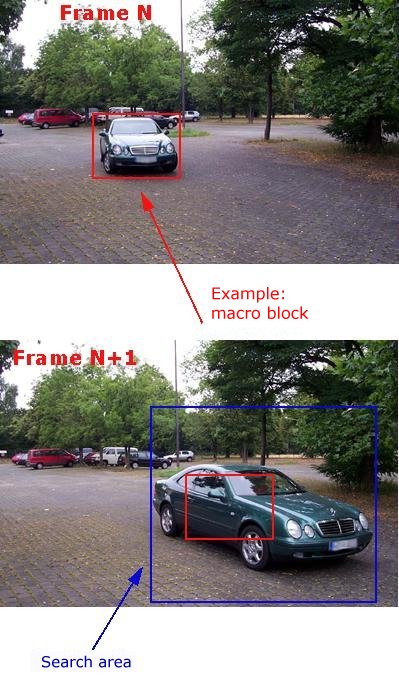Video Guide Part 3: Video Formats and Compression Methods
How MPEG Compression Works
Figure 1 shows a Mercedes coupe, the position of which is altered from frame N to the following frame N+1. The image background however is very similar for both frames.
Figure 1: Motion compensation: The Mercedes coupe has changed its position from the starting frame N to the next frame N+1, the background image however is identical.
The image details are altered continuously from one frame to the next N+1 frame as the car moves from left to right without changes being made to the background (e.g. the trees). A central part of the MPEG compression comes into play at this point: motion compensation. A vector can describe the movement of the Mercedes coupe relatively easily. It is enough to state that the vehicle has moved by 12 pixels to the right and 10 pixels downwards from frame 1 to frame 2. However, the recognition of a complete object (and at that, one as complicated as a car) would be much too difficult to realize in practice.
Get Tom's Hardware's best news and in-depth reviews, straight to your inbox.
Current page: How MPEG Compression Works
Prev Page Compression - What For? Next Page Subdivision Into Macro Blocks